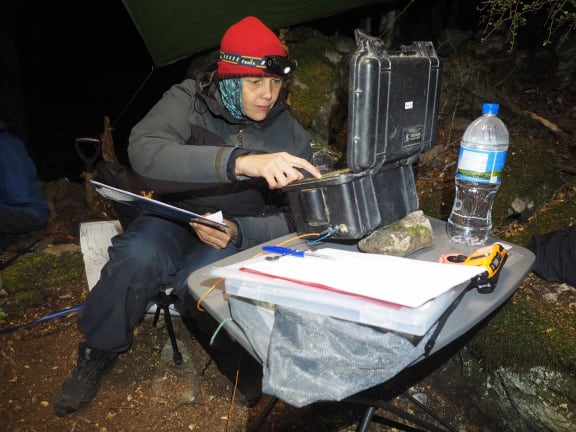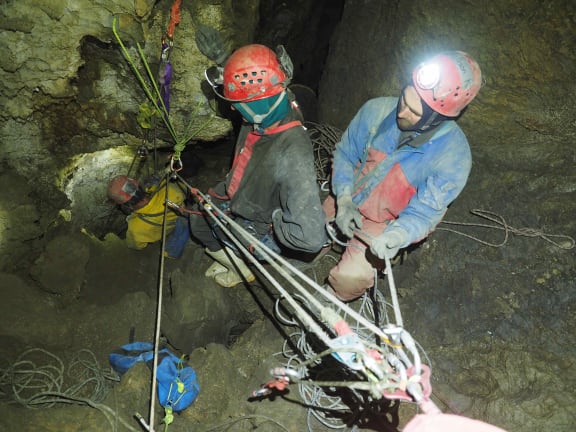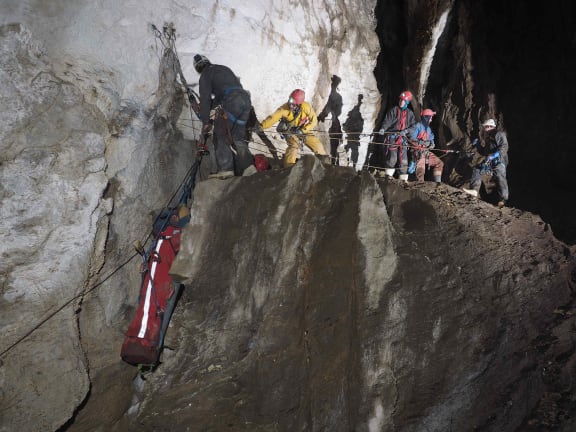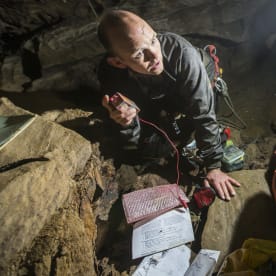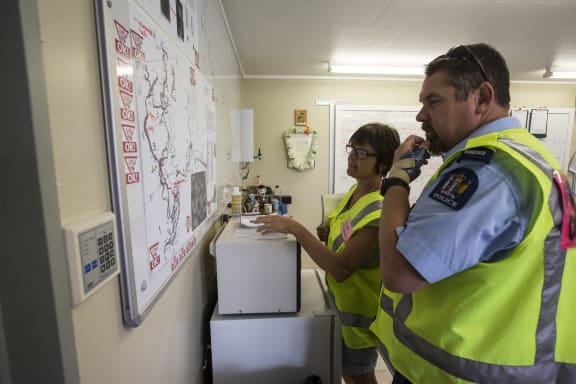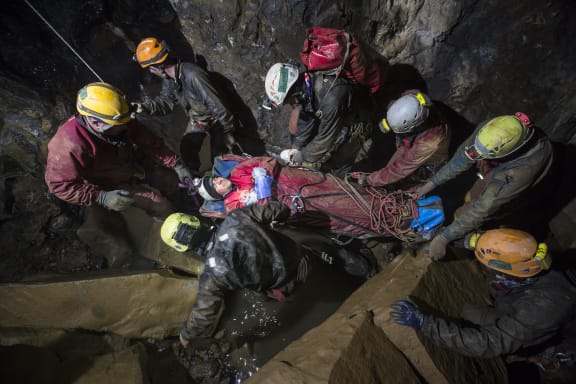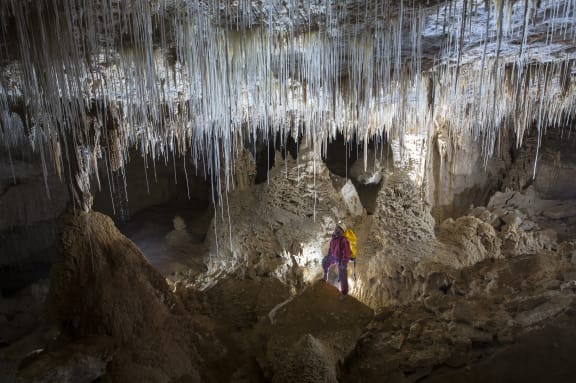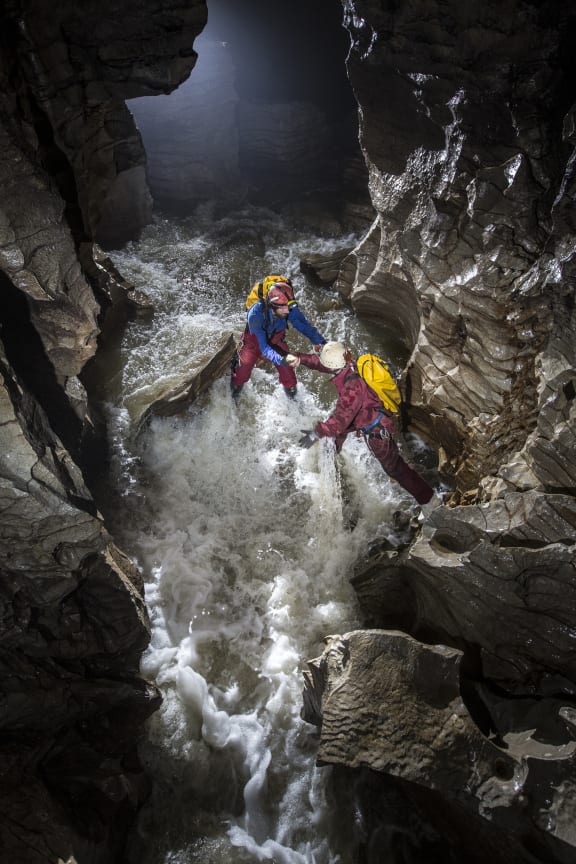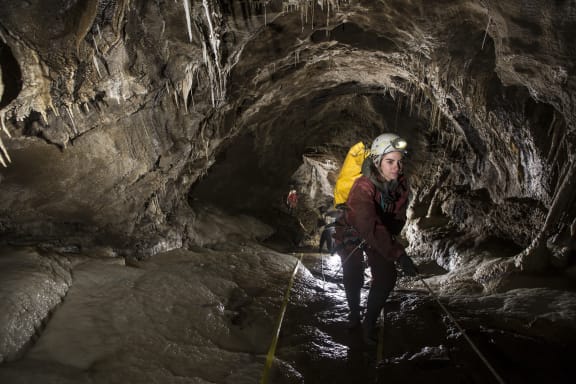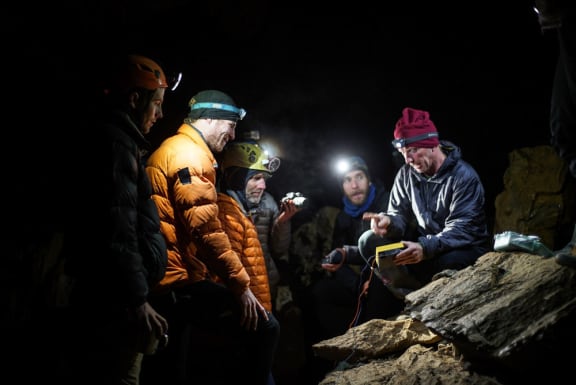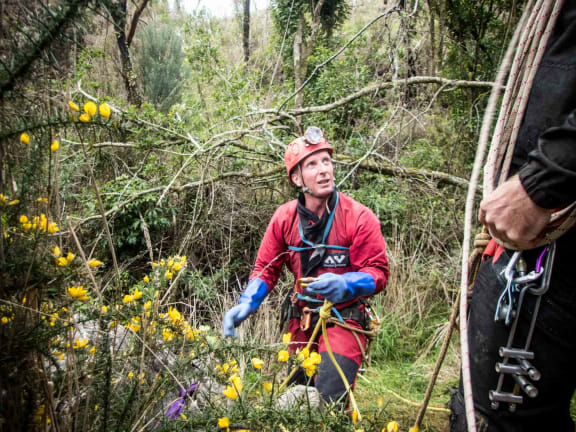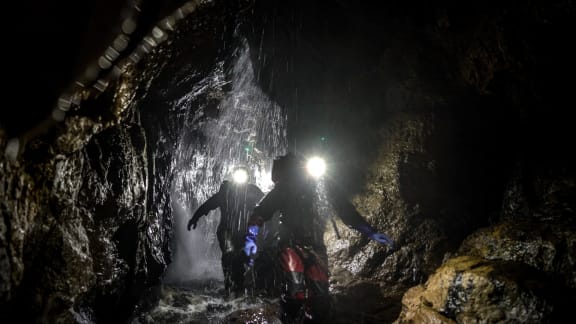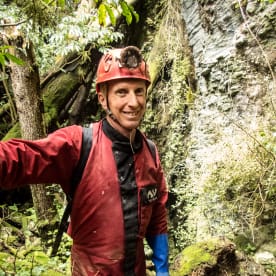Our summer series on lifesavers continues with rescue teams that spend far more time training than they do on rescue operations, because they're highly specialised.
Lynn Freeman spoke to David Ellacott and Chris Whitehouse who's President of the New Zealand Speleological Society (NZSS), he lives in one of the country's prime caving areas around Golden Bay in the top of the South Island.
Whitehouse says caving is adventure in its most real sense.
“You get to get away from all the craziness of the world and there’s literally nothing else to worry about other than yourself and your friends when you’re underground. It’s just a whole different world removed from all the nonsense of the above-ground world.”
He says new caves are being discovered all the time, and with such a small community, it’ll take several lifetimes to find them all.
“Caving itself, as a sport, has being going for around 50 years or so and as technology like lights and gear getting lighter progresses, we can go further and longer and harder than people have done before. We’re basically following the footsteps of other people but we’re going beyond the limits that they faced.”
Ellacott describes the appeal of caving as being similar to that of tramping, and the way people get into trouble are similar in both scenarios - a lack of preparation.
“Generally most people start of caving going on the odd trip and build up their experience. They get more complicated, start using ropes and ladders and so on, and it’s only later on that they start pushing the harder and deeper caves. It’s a bit of an apprenticeship moving up into those skill levels.
“You do have some people who go underground without any experience and they cause a few issues with getting lost or their lights going out, but mainly the cavers themselves are fairly well prepared.”
Ellacott says there’s normally only one or two rescues in a year in New Zealand and they tend to fly under the radar because they’re resolved fairly quickly.
“There’s the odd search for a lost party or call out for a lost party and generally they get found or find themselves before a search gets underway.”
Whitehouse says injuries are a common cause for concern in caving expeditions, but cavers are a tough breed and will often find a way out on their own in spite of them. He gives an example of a friend who, while on a rescue exercise, slipped and broke his leg.
“With nothing but a few of us helping him along, he hopped and crawled his way out of the cave which was quite impressive. He just didn’t want to go in a stretcher for hours and hours.”
Ellacott says one of his most memorable rescues occurred around 20 years ago during the New Year period and took four days. A caver’s abseil failed and he’d fallen around 12-15 meters in a cave on Mt Owen and he found himself with broken bones. He says the caver was around eight hours into the cave, so it was a huge logistical challenge to get a medical team in the back end to help him out.
Whitehouse says that, luckily, he hasn’t been involved in many memorable rescues and is more involved in training and exercises.
“Other than the friend that broke the leg during the exercise, nothing much apart from scout groups and things like that we’ve been called out to try and find. Fortunately, I’ve not been involved in much in the way of rescues and I’d quite like to keep it that way.”
One of the biggest fears for many people thinking about caving is the idea of getting stuck in a tight squeeze. Whitehouse says that, being tall, he can cope with a narrow passage, but struggles on tight bends.
“One of the freakiest moments I ever had was when I was - technically - stuck for about 15 minutes when I’d slipped down a little rift because I’d gone in one way and tried to come out another. I couldn’t get out and it was so tight, I couldn’t move my head with my helmet on.”
He managed to get out after a friend came from above to remove his helmet and he wriggled his way out.
Despite that scare, Whitehouse says people get more mentally stuck than physically.
“It is a big part of it. I just figure, if I can get into something, then I can get out.”
He says the fact that there’s no easy way out is one of the exciting things about caving.
“If you go out into the bush, and you can get to some pretty remote places, but if the weather’s on your side and you’ve got a locator beacon then a helicopter can fly overtop and winch you out of there - there is a way out. But, with caving there isn’t. If you went in one way, and there’s only one way out, that’s it.
“Having that in your mind is a really good exercise in mental strength and I think that’s one thing all cavers share. We’re all a bunch of very eclectic people, but we all share that mental strength to carry on.”
